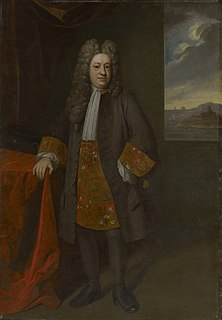
Elihu Yale was a British-American colonial administrator and philanthropist. He served as President of the British East India Company settlement in Fort St. George, at Madras. He is best remembered as the primary benefactor of Yale College, which was named in his honor. His fortune, as of 1699, amounted to £200,000.
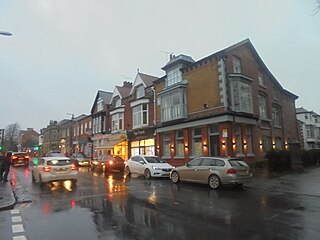
Boston Spa is a village and civil parish in the City of Leeds metropolitan borough in West Yorkshire, England. Situated 3 miles (5 km) south of Wetherby, Boston Spa is on the south bank of the River Wharfe which separates it from Thorp Arch. According to the 2001 census the parish had a population of 4,006 rising to 4,079 in the 2011 census.

Tyndall is the name of an English family taken from the land they held as tenants in chief of the Kings of England and Scotland in the 11th, 12th and 13th centuries: Tynedale, or the valley of the Tyne, in Northumberland. With origins in the ancient Anglo Saxon nobility of Northumbria, the Royal Scottish House of Dunkeld and the Anglo-Norman nobility, they have contributed courtiers, judges, writers, historians, sailors, airmen, scientists and philosophers to the history of England, Ireland and the new world. Two members of the family were offered, and declined, the throne of Bohemia in the 15th century and one of their number, William Tyndale, was the first modern translator of the Bible into English and one of the most important figures in the evolution of the modern language. The family is spread today throughout the British Isles and the English speaking world.

The landed gentry, or the gentry, is a largely historical British social class of landowners who could live entirely from rental income, or at least had a country estate. While distinct from, and socially below, the British peerage, their economic base in land was often similar, although in fact some of the landed gentry were wealthier than some peers, and many gentry were close relatives of peers, and it was not uncommon for gentry to marry into peerage. It is the British element of the wider European class of gentry. With or without noble title, owning rural land estates often brought with it the legal rights of lord of the manor, and the less formal name or title of squire, in Scotland laird.
Scrope is the name of an old English family of Norman origin that first came into prominence in the 14th century. The family has held the noble titles of Baron Scrope of Masham, Baron Scrope of Bolton, and for a brief time, the Earl of Wiltshire.

Matthew Hutton (1529–1606) was archbishop of York from 1595 to 1606.

Scrivelsby is a village and ecclesiastical parish in the East Lindsey district of the County of Lincolnshire, England. It is situated 2 miles (3.2 km) south of Horncastle and is on the B1183 road 1 mile (1.6 km) east from the A153 road. It is administered by the civil parish of Mareham on the Hill.
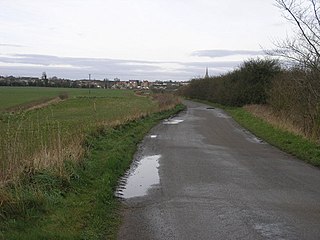
Laughton en le Morthen is a small dormitory village and civil parish in the Metropolitan Borough of Rotherham lying to the south of Rotherham, South Yorkshire, England, and its main attraction is the All Saints Church with its tower and spire of 185 feet. The village had a population of 1,241 at the 2011 Census. The parish also includes the hamlets of Carr, Slade Hooton and Brookhouse.
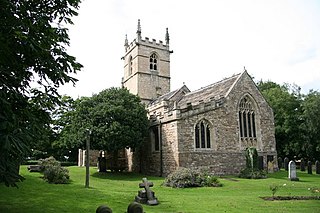
St James' Church, High Melton is a parish church of the Church of England in High Melton, South Yorkshire, England.
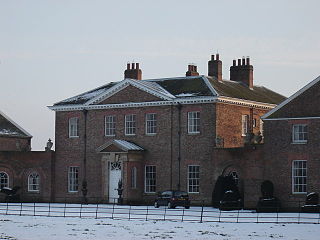
Houghton Hall, Sancton, near Market Weighton, is a Grade I listed Georgian country mansion in the East Riding of Yorkshire, England, set in an estate of 7,800 acres (32 km2). Located on the estate is the village of Sancton and the vestigial remains of the ancient hamlet of Houghton. It was built c. 1765–8 by Philip Langdale to the designs of Thomas Atkinson and underwent minor remodelling in 1960 by Francis Johnson. It is built in pink brick with stone dressing and slate roof, with a three-storey, 5-bay main block.
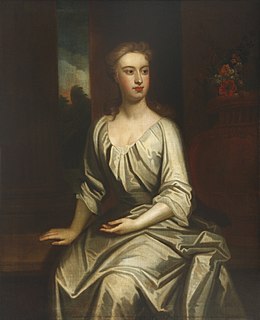
Lady Elizabeth Hastings, also known as Lady Betty, was an English philanthropist, religious devotee and supporter of women's education. She was an intelligent and energetic woman, with a wide circle of connections, including artists, writers and designers, an astute business investor and proponent of innovative farming techniques.
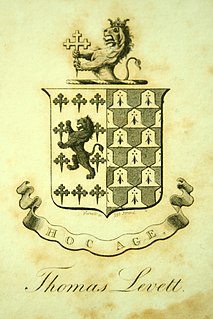
Levett is a surname of Anglo-Norman origin, deriving from that of the French de Livet, which is held particularly by families and individuals resident in England and British Commonwealth territories.
Sir Francis Barrington, 1st Baronet of Barrington Hall, Essex was a Puritan activist and politician, who was MP for Essex from 1601 to 1604, then 1620 to 1628.
Sir Thomas Penyston, 1st Baronet (1591–1644) was a 17th-century member of the gentry who received one of the first baronetcies. In 1637 he was sheriff of Oxfordshire and in 1640, he was a member of parliament for Westbury.
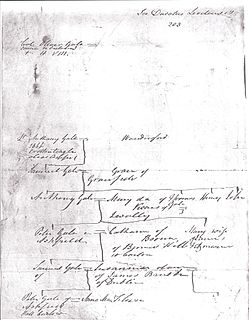
The Ashfield Gales consisted of six generations of a Gale family who owned the Ashfield estate in Killabban Parish, Queens County, Ireland from the mid-17th Century until 1851.
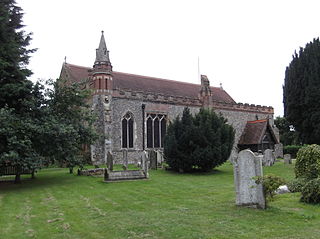
Hatfield Peverel Priory was a Benedictine priory in Essex, England, founded as a secular college before 1087 and converted into priory as a cell of St Albans by William Peverel ante 1100. It is in the English Heritage Register of Parks and Gardens of Special Historic Interest in England and is located on the south side of the village of Hatfield Peverel, about 5 miles north-east of Chelmsford. At the Dissolution of the Monasteries, a timber-frame structure dominated the property.
Eleanor Davies (1590–1652) was a prolific English writer and prophet, publishing almost seventy pamphlets during her lifetime.
The Masbrough Independent Chapel was an Independent or Congregationalist chapel in the Masbrough district of Rotherham, from the 18th century until the 1970s, at which point it became part of the United Reformed Church.

The Washington family is an American family of English origins that was part of both the British landed gentry and the American gentry. It was prominent in colonial America and rose to great economic and political eminence especially in the Colony of Virginia as part of the planter class, owning several highly valued Plantations, mostly making their money in tobacco farming. Members of the family include the first president of the United States, George Washington (1732–1799), and his nephew, Bushrod Washington (1762–1829), who served as Associate Justice of the Supreme Court of the United States.
Margaret de Neville, also Margaret de Longvillers and domina Margareta de Nevill was an English landowner in Yorkshire and Lancashire during the thirteenth and fourteenth centuries. Her inheritance helped to consolidate the power and influence of the House of Neville.














